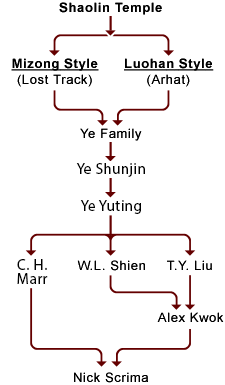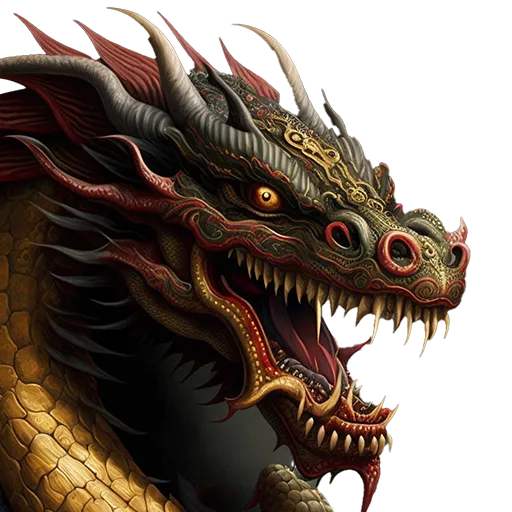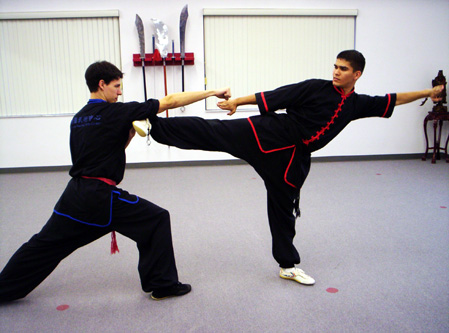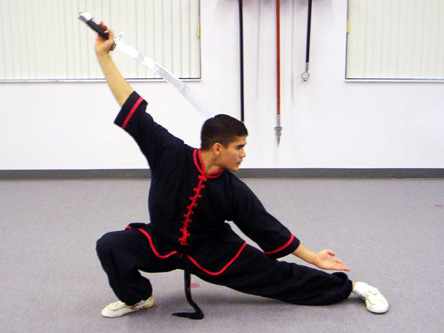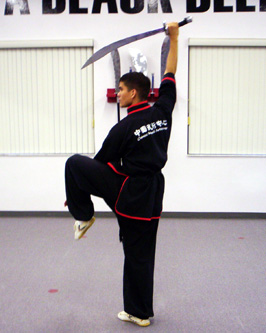Mizong Luohan Kung Fu / My Jong Law Horn (Lost Track Arhat Kung Fu)
by Master Nick Scrima
Mizong Luohan Kung Fu (My Jong Law Horn in Cantonese) is a combination of two northern styles: Mizong Quan and Luohan Quan. Both styles trace their origins directly to the famous Shaolin Temple in Henan Province, China.
Great Grandmaster Ye Yuting, originally from Hebei Province, was invited to teach at the South China Athletic Association in Hong Kong and it was there that he taught for more than 30 years until his death in 1962 at age 70. He was known as one of the Three Tigers from the North: Ye Yuting (Mizong Luo Han), Dong Yingjie (Yang Style Tai Chi) and Geng Dehai (Taishing Pikua – Monkey Kung Fu). It was at the South China Athletic Association that Mizong Luohan came to the forefront as a martial arts system and was taught to a great many people.
Mizong Quan (Lost Track Boxing)
Mizong Quan, also known as Mizong Yi and Yan Jing, is a powerful Chinese martial arts system that was popularized in the Hebei Province, especially in the Jinhai and Cangzhou Prefectures.
Mizong Quan is characterized by baffling footwork, intricate hand techniques, joint locking, and quick changes of tactics.
Luohan Quan (Arhat Boxing)
Luohan is a Chinese term derived from the Sanskrit word Arhat; its literal translation means “Worthy One.” In Buddhist tradition it represents an enlightened being and the “foe-destroyer” (destroyer of evil). In Shaolin tradition the Luohan is a legendary figure. Several Chinese martial arts systems, as well as a great number of forms, bear the name Luohan.
The Luohan system includes a wide variety of kicks, sweeps, and leaps. Punches and strikes are swift and powerful and executed at long range. Close-in work incorporates joint locking and throwing techniques.
Mizong Luohan Kung Fu blends fighting elements from both root systems in principles and techniques. This renders it a more complete martial arts system. Both hard and soft elements are combined in the execution of the techniques. The style changes very quickly. Lighting strikes are combined with powerful kicks and rapid footwork to dazzle and confuse an opponent. Mobility and deception are trademarks of the Mizong Luohan fighter.
The Six Necessities
The Six Necessities, or Zhi Liu Yao, represent the core guiding principles in Mizong Luohan practice. They refer to the following:
- Xin Yao Shen – The mind must be calm
- Dan Yao Zhuang – Courage must be magnificent
- Yan Yao Ming – Eyes must be sharp
- Shou Yao Kuai – Hands must be quick
- Bu Yao Wen – Steps must be firm
- Fa Yao Bian – Techniques must be changeable
All training conducted in Mizong Luohan, from the basic techniques to forms and fighting, must be guided by the Six Necessities in order to develop the desired mental and physical attributes.
There are additional principles and fighting concepts beyond the Six Necessities, but these are reserved for advanced students and not appropriate for discussion here.
Weapons
The Mizong Luohan system contains a variety of weapons. Each weapon helps to develop certain physical attributes and mental qualities.
The Spear develops speed; the Staff develops coordination and power; the Saber develops a strong grip and powerful forearms; the Sword develops fluidity, grace and a calm mind; and the Guan Dao develops great strength and firm stepping.
Great Grandmaster Ye Yuting was famous for the Double Hook Swords. This is a difficult weapon to wield and requires diligence and perseverance to become skilled. The Double Hook Swords have become representative of the style and are incorporated into our school emblem.
Nei Gong
While not widely known, Mizong Louhan has Nei Gong training (also known as Qi Gong). This involves cultivating Qi, the body’s intrinsic energy, through proper breathing and mental focus. I learned two primary exercises from Grandmaster Marr. These are Bao Yue (Embracing the Moon) and Tui Shan (Pushing the Mountain), performed while holding certain postures. They can be practiced in the Horse Stance or in a more modified upright stance.
My journey continues
I have been training in Mizong Luohan for more than 40 years. My primary teacher is Grandmaster Alex Kwok who introduced me to Grandmaster Cam Hung Marr, a senior master in the style. Grandmaster Kwok has been a mentor for me, not only in the intricacies and advanced concepts of Mizong Luohan, but he has also elucidated me in the history and evolution of Chinese martial arts.
Learning Mizong Luohan Kung Fu
Mizong Luohan is taught only to intermediate and advanced students who have developed a good foundation and have demonstrated sincerity and discipline in the study of Chinese martial arts.
Note: The Wushu Magazine published in Hong Kong in the 1950s used the idiom Hebei San Jie, when referring to the Three Tigers from the North. The three masters were all from Hebei Province. The term “Jie” represents a person of outstanding skill and distinguished character.
Lineage
